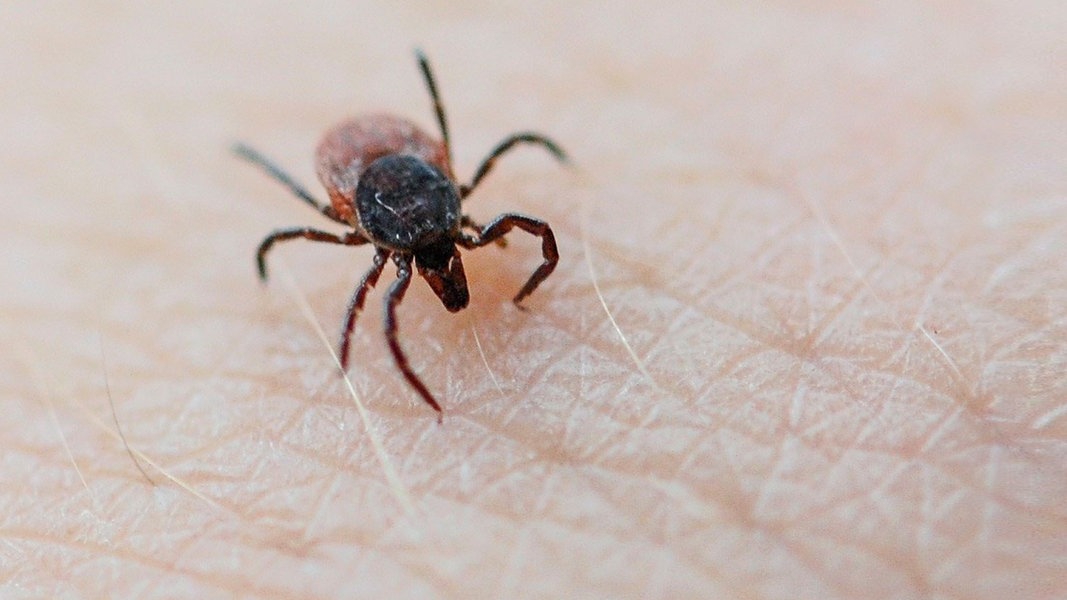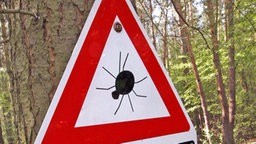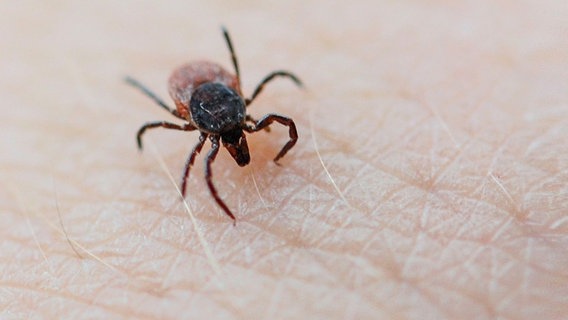Status: 04/11/2023 3:16 p.m
Tick bites can transmit diseases such as TBE and Lyme disease. Proper clothing, bug spray, and a vaccination will protect you. Ticks can be easily removed with special tools.
The most common type of tick in Germany is the common wood tick (Ixodes ricinus) from the tick family. The red-brown animal is 2.5 to 4 millimeters in size and infests a wide variety of host animals, such as deer, dogs and cats, but also humans. The parasites usually wait about a meter above the ground for food – even in well-kept parks or gardens in the city. In a fraction of a second, they cling to passing creatures. Ticks cannot jump or even fall from trees; direct contact is necessary.
Once the suckers have found a host, they look for a slightly moist area of skin with a good blood supply. Ticks cannot bite through clothing. However, they cling to it and then crawl to a suitable spot on the skin.
Remove tick – how it works
Tick tweezers or cards work well to remove the small parasites.
A tick that has bitten the skin must be removed as soon as possible. To do this, grasp the tick with pointed tweezers or special tick tweezers close to the skin and pull it out completely. Shake lightly. Unscrewing is not helpful. The removal works particularly easily with a so-called tick card. Both tools are available in pharmacies.
If no tools are available, you can work with your fingernails or a thread. If available, use a magnifying glass. Do not squeeze or pinch the tick’s body. Do not kill the animal before removing it, and under no circumstances apply oil, nail polish remover or similar to the tick. Thoroughly disinfect the puncture site after removal and mark or photograph it to be able to identify any later redness.
Tick head stuck: what to do?
When removing the tick, part of the animal may get stuck in the skin. Usually it is not the head, but a part of the stinging apparatus. In this case, do not continue drilling around at the site, but disinfect well and keep an eye on it. As a rule, the body rejects the rest on its own.
Protection against ticks: Long clothing and tick sprays
So that ticks don’t even have a chance, it makes sense to take a few measures:
- Light-colored clothes wear that covers the skin as completely as possible.
- close accesses: Tuck shirt into pants and pant legs into socks.
- anti-tick agent reapply with the active ingredients DEET or Icaridin every two to three hours. The eight-hour protection promised by some manufacturers is not realistic.
- Tick tweezers, tick tweezers or tick card take with you for safe removal.
- Shake out clothes after every trip into nature, best over the bright bathtub, so the ticks are clearly visible.
- Check body for ticks: Also take a close look at protected skin areas such as armpits, navel, scalp, groins or the genital area.
- timely TBE vaccination When traveling to risk areas: For full vaccination protection, there are usually three vaccinations necessary.
Borreliosis and TBE: Ill from a tick bite
The tick bite itself is harmless to humans, but pathogens can be transmitted: including the bacterium Borrelia burgdorferi, which can cause Lyme disease, and the virus that causes tick-borne encephalitis (TBE).
Lyme disease: blush as an important clue
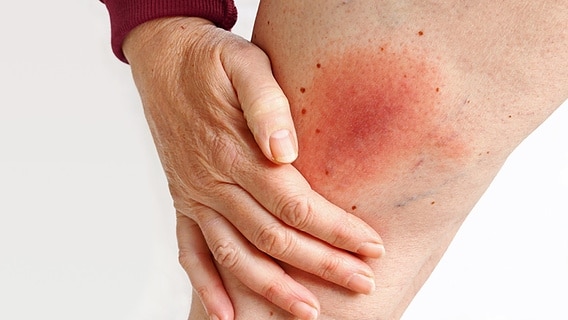
Reddening of the skin is a typical sign of Lyme disease that should be shown to a doctor.
Lyme disease is widespread and occurs throughout Germany. About every third tick in this country carries the pathogen. The risk of transmission is initially very low, but increases significantly after twelve hours of suction time. The symptoms of the infection are diverse and initially often resemble flu with exhaustion, joint or muscle pain and fever. A sure indication of Lyme disease is the so-called reddening, which occurs around the puncture site and enlarges in around 90 percent of infections – even weeks later. A diagnosed Lyme disease is treated with antibiotics, there is currently no vaccine.
TBE: Vaccination protects
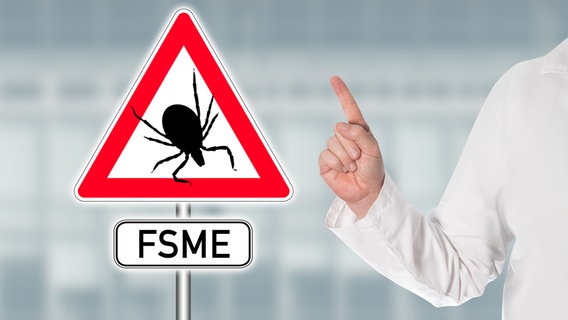
When traveling to TBE risk areas, you should start the multi-stage vaccination in good time.
The second known disease that ticks can transmit is much less widespread: tick-borne encephalitis (TBE). Several hundred people fall ill with it in Germany every year. To the risk areas In addition to southern Germany, this also includes the Emsland district in Lower Saxony, Austria, Eastern Europe and Scandinavia.
About ten days after an infection with TBE, flu-like symptoms appear. In around ten percent of those affected, the meninges then become inflamed, and in severe cases the brain and spinal cord as well. There is no drug that works specifically against the TBE virus. In most cases, however, the disease heals completely without therapy, and in the worst case it can be fatal in older or weakened people. There is an effective vaccination against TBE, but it has to be refreshed regularly. Anyone who often stays in risk areas or goes on vacation there should contact the TBE vaccination protection think.
Further information

